Best Windows laptop 2023: Our top 6 picks for Windows 11
Find the best Windows 11 solution for your specific needs.

• The list in brief ↴
1. Best overall
2. Best for creators
3. Best budget
4. Best for gaming
5. Best 2-in-1
6: Best for business
• How to choose
• How we test
Choosing the best Windows laptop for most people involves many different factors. A reasonable price, ample performance, a suitable display, and a comfortable keyboard are some of the features considered. Manufacturers continuously update their product lineups with new hardware and designs; some generations are better than others. Our current top pick for 2024 is the Lenovo Yoga 9i 14 (Gen 7).
Lenovo's Yoga lineup has come a long way over the last couple of years, and this is the culmination of a bunch of good decisions. It's also priced reasonably competitively, pushing it above many other close seconds that might take the top spot. Not quite what you need? There are many other great picks for the best Windows laptop, which we've rounded up here.
It's a great time to be a fan of Windows laptops, and when shopping around, you might be overwhelmed by all the choices from a myriad of manufacturers. For most people, the Yoga 9i will bring a mix of performance, build quality, features, and price that is hard to resist. It's an excellent laptop for just about anything less than gaming or specialized design and development work.
If you'd rather invest in one of our picks for the best Windows laptop that isn't also a 2-in-1 — meaning the lid doesn't rotate around 360 degrees for tent, stand, and tablet modes — you'll no doubt want to check out the HP Pavilion Plus 14 on a budget, and the Razer Blade 18 for high-end gaming.

Daniel Rubino is the Editor-in-chief of Windows Central, head reviewer, podcast co-host, and analyst. He has been covering Microsoft since 2007, when this site was called WMExperts (and later Windows Phone Central). His interests include Windows, laptops, next-gen computing, and, for some reason, watches. Regarding the former, his expertise helps advise the team on which aspects are most important when shopping for the best Windows laptops. This leads to the cumulative selections listed here, updated with modern choices if deserved.
The quick list
These top options are just the appetizer before we get into the real meat of the best Windows laptop picks, ranging from the best for everyone and models for creators down to budget devices that go a long way for less money.
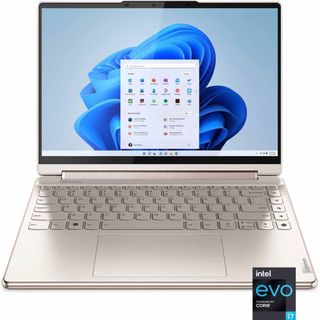
The best overall
Lenovo knocks it out of the park with the outstanding Yoga 9i for 2022-2023. With excellent performance, fantastic hardware, and a satisfying chassis redesign, the Yoga 9i showcases the best of Windows laptops.
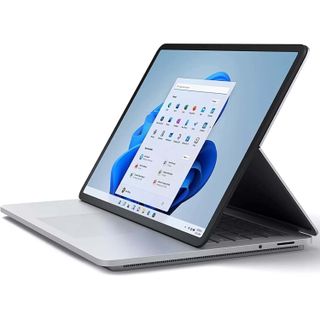
For creators
This is Microsoft's laptop for professionals and power users who frequent professional-grade software like Photoshop, Premiere Pro, AutoCAD, or crunching raw data.
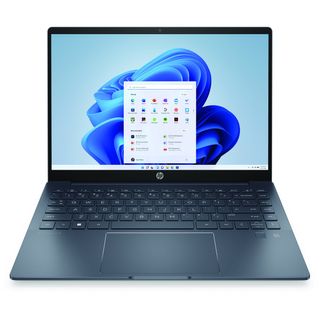
Best budget
HP's powerful and affordable 14-inch laptop starts at $799, but it's the ability to get a 90Hz 2.8K 90Hz OLED display and H-series processor that wowed us.

Best for gaming
Desktop power in laptop form. NVIDIA RTX 4090, Intel i9 HX, QHD+ 18" screen, 5 MP webcam, six speakers. The ultimate gaming laptop.

Best 2-in-1
Almost everything about the Surface Pro 9 is perfect, if you like the form factor that is.
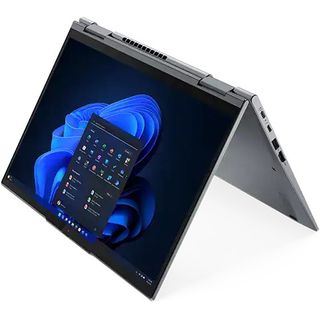
Best for business
The ThinkPad X1 Yoga scored well with our team each time Lenovo updated it, and the Gen 8 model sold me within a single day of use.
The best Windows Laptops we recommend in 2024
Why you can trust Windows Central
The best overall Windows laptop for most people

Specifications
Reasons to buy
Reasons to avoid
✅ You want the best premium convertible Windows laptop on the market.
✅ You consume a lot of media content like video and want excellent sound and display.
✅ You're a creator who wants a color-accurate display for photo editing and light video editing.
✅ You want just the finest Windows 11 PC with all the bells and whistles.
❌ You primarily game or need a discrete NVIDIA GPU.
❌ You need built-in 4G LTE or 5G mobility.
❌ You don't need a convertible laptop.
❌ You want the best battery life; the Yoga 9i 14 peaked at 8 hours and 54 minutes in our low brightness tests.
🔎 Yoga 9i 14 The Gen 7 variant takes what we loved about this convertible and made it even better. The soundbar hinge is louder, the body now has rounded edges for a more comfortable feel, the touchpad is larger, there are new 16:10 displays with impressive specs, and 12th Gen Intel Core CPUs boost performance. ★★★★½
Lenovo's Yoga lineup of convertible laptops saw a full refresh this year, with upgrades to the Yoga 6 (Gen 7), Yoga 7i 14 and 16 (Gen 7), and Yoga 9i 14 (Gen 7). We reviewed the previous Yoga 9i 14 generation and came away mostly pleased with what was on offer, noting that it was still using a 16:9 display and that it lacked an IR camera.
The newest version solves those issues, and it does so well enough that Editor-in-Chief Daniel Rubino said, "the Yoga 9i is, basically, perfect" in his Yoga 9i 14 (Gen 7) review.
The Yoga 9i 14 (Gen 7) now has three 14-inch touch display options, all with a taller 16:10 aspect ratio. The baseline screen sits at a 1920x1200 (FHD+) resolution with 100% sRGB color, 400 nits brightness, 60Hz refresh rate, and Dolby Vision. Moving up, the 3840x2400 (UHD+) screen is OLED with 400 nits brightness, 100% DCI-P3 color, 60Hz refresh rate, VESA DisplayHDR 500, and Dolby Vision. Finally, the 2880x1800 (2.8K) screen is OLED with 400 nits brightness, 100% DCI-P3 color, 90Hz refresh rate, VESA DisplayHDR 500, and Dolby Vision. Unfortunately, all screens have a glossy finish to go along with the touch function.
The active pen no longer has a silo built into the laptop. Instead, you get a full inking experience with the included Lenovo Precision Pen 2. It has 4,092 levels of pressure sensitivity, tilt detection, and it works with WGP, AES 2.0, and MPP 2.0 screens.
The overall design of the laptop has also changed. High-end Yoga laptops have a reputation for being a bit sharp along the edges; the 9i 14 (Gen 7) fixes that with new rounded edges. It's much more comfortable to hold, especially as a tablet. The touchpad has been blown up by 45% to make pointing that much more comfortable, and the edge-to-edge keyboard now includes 1-Click Function keys with extra shortcuts.
The aluminum pieces are joined by a rotating soundbar hinge with quad Bowers & Wilkins speakers for even louder audio than before. Dolby Atmos adds to the immersion. The laptop offers dual Thunderbolt 4, two USB-A 3.2, and a 3.5mm audio jack, but it lacks any sort of SD card reader. Wi-Fi 6E and Bluetooth 5.2 round out wireless connectivity. An IR camera and an FHD camera sit above the display.
Performance is still stellar thanks to Intel's 12th Gen Core CPUs, LPDDR5-5200MHz RAM, and PCIe 4.0 storage. Overall, this laptop is a dream for anyone who loves handling productivity during the day and watching movies and TV at night. It has one of the best designs around, and its extra features make it well worth the price.
Read the full review: Lenovo Yoga 9i Gen 7 review: Arguably the best 14" OLED 2-in-1 laptop of 2022
The best Windows laptop for creators
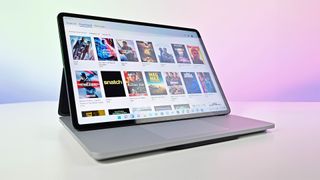
Specifications
Reasons to buy
Reasons to avoid
✅ You're a social content creator (editing video or photos)
✅ You're a professional developer, designer or creator (CAD, 3D, drawing)
✅ You work within STREAMi (Science, Technology, Research, Engineering, Arts, Maths, innovation)
❌ You want a gaming PC
❌ You're on a tight budget
❌ You just need a clamshell laptop
🔎 Surface Laptop Studio delivers a powerful, flexible, workstation-style PC perfect for artists, engineers, and some light gaming. No other laptop currently does everything it can do at this level. But, like all Surfaces, you pay for that experience. ★★★★☆
Microsoft's Surface Laptop Studio employs a rare design that is essentially the spiritual successor to the Surface Book series. While the display no longer detaches fully from the rest of the chassis, the Laptop Studio's design allows the screen to sort of pull forward. It can either remain vertical for stage mode (with the touchpad still uncovered), or it can lie flat (with the display facing up) for a unique Surface experience that should appeal to creators and designers.
The 14.4-inch touch display has a 2400x1600 resolution, 3:2 aspect ratio, 120Hz refresh rate, and excellent color reproduction and brightness. Dolby Vision is included for better movies and TV. If you're into inking, the Laptop Studio pairs well with the Surface Slim Pen 2. A 120Hz refresh rate makes for seamless writing and drawing, and the new haptic feedback feature is available in select apps.
Intel 11th Gen H-series CPUs power the Laptop Studio, and you can combine them with an NVIDIA RTX 3050 Ti laptop GPU. You can game on this laptop to an extent, though it's far more comfortable being used for productivity work in the creative and design sectors.
You can expect the usual Surface premium level of design in all areas here, but the laptop doesn't come cheap. Nevertheless, anyone who needs a versatile mobile platform for heavier work should take notice.
Read the full review: Surface Laptop Studio review: Redefining what a Windows laptop can be (again)
The best Windows laptop on a budget
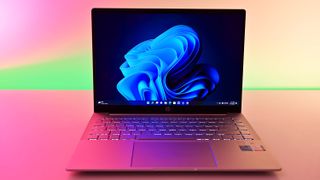

Specifications
Reasons to buy
Reasons to avoid
✅ You want a high-quality, mid-range 14” laptop
✅ A bright, color-accurate OLED display is important
✅ You need a powerful CPU but not a gaming GPU
✅ You watch movies, crunch data, edit photos/videos
❌ You want a touchscreen laptop
❌ You want a powerful processor and great battery life
❌ You want a 2-in-1 to design or gaming laptop
❌ You don’t need Thunderbolt 4
🔎 HP Pavilion Plus 14 Need a laptop that represents arguably the best value around right now? The HP Pavilion Plus 14 will deliver thanks to plenty of config options, 90Hz OLED display, and outstanding build. ★★★★½
The HP Pavilion Plus 14 is an interesting device. It starts at just $800, it offers Intel's 12th Gen Core P-series, U-series, and H-series processors, it's built extremely well, and it has up to a 2.8K OLED display. Even if you jump up to the 2.8K OLED screen and H-series CPU, you're still only paying just more than $1,000. For a bit more money, you can add either a discrete NVIDIA MX550 or NVIDIA RTX 2050 Laptop GPU for some extra power.
In his Pavilion Plus 14 review, Editor-in-Chief Daniel Rubino called it "the best $1,000 you can spend on a powerful OLED laptop right now." That's saying something, as many manufacturers were focusing heavily on improving their mid-range lineups. Port selection lacks Thunderbolt, but you still get dual USB-C, USB-A, HDMI, and a microSD card reader.
The 5MP webcam with True Vision is perfect for video calls, dual speakers pump out decent audio, and the keyboard is comfortable. As for the display, the 14-inch 2.8K OLED version is tops, coming in with a 90Hz refresh rate and 400 nits brightness. It also hits 100% sRGB, 97% AdobeRGB, and 100% DCI-P3 color, making it ideal for photo or video editing.
The real trick to the Pavilion Plus 14 is ordering the suitable configuration for your needs (and expectations). It’s rare to offer customers three classes of processors instead of just Core i5 or i7. A rule of thumb for the right processor is this:
- Get the U-series processor and extra battery life, and if you need a basic computer for web, email, watching movies, Office, video calls, etc.
- Get the P-series chip if you need a bit more pop for some intensive tasks with a longer duration. Add in the RTX 2050 GPU for some ability for video editing and light gaming.
- And if you do a lot of hard data crunching and need the most powerful, grab the H-series with the caveat that battery life won’t be amazing (especially when paired with the OLED panel).
Read the full review: HP Pavilion Plus 14 review: The best $1,000 you can spend on a powerful OLED laptop right now
The best Windows laptop for gamers

Specifications
Reasons to buy
Reasons to avoid
✅ You want the highest-performing gaming hardware in a portable form factor.
✅ Most of your gaming is done at home with available AC power.
✅ You prefer larger screens with smooth refresh rates.
❌ You want a lightweight machine that's easy to transport.
❌ You need to maintain a quiet environment when gaming.
❌ You primarily play games while traveling, relying on battery power.
🔎 Razer Blade 18 If you're looking for a gaming beast that can handle creative work, the Razer Blade 18 is the one. However, if you've never used an 18-inch laptop, be prepared for a shock. It's a monster. ★★★★½
Razer knows a thing or two about gaming hardware, and our Tech Editor Ben Wilson was blown away in his review of the Razer Blade 18. It's an incredibly powerful gaming laptop with a 13th Gen Intel Core i9-13950HX CPU, an NVIDIA RTX 4090 L GPU, a 240Hz QHD+ screen, and a sleek design that doesn't go too over the top while unmistakably keeping Razer's aesthetics. It can handle practically any game at high settings and excels with general media consumption thanks to its THX-certified speakers, 5MP wide-angle webcam, and color-accurate panel. The vapor chamber cooling system controls temperatures, but it's one of the loudest machines we've ever used.
Unfortunately, the Blade 18's mediocre keyboard has shallow key travel and a risky power button placement to offset the gigantic, beautifully responsive touchpad. There's also an issue of unimpressive battery life and a considerable amount of throttling to its components when unplugged, making portable gaming far less of a thrill, but it's still functional. External monitors can connect via HDMI and Thunderbolt USB-C, and you get an Ethernet port that supports 2.5Gb speeds, so you could hook it up as a desktop replacement if you stick with AC power.
Overall, the Razer Blade 18 is an impressive gaming laptop that delivers desktop-class performance in a (somewhat) portable form. It's expensive, heavy, and noisy, but fast, smooth, and versatile. If you're looking for a gaming beast that can handle creative work, the Razer Blade 18 is the one. However, if you've never used an 18-inch laptop, be prepared for a shock. It's a monster.
Read the full review: Razer Blade 18 review: Extreme portable gaming without compromising iconic aesthetics
The best Windows 2-in-1

Specifications
Reasons to buy
Reasons to avoid
✅ You want the best Windows 2-in-1 on the market
✅ You want a high-resolution 120Hz display
✅ You often draw or take notes using a digital pen
✅ You need a portable 2-in-1 that's excellent for travel
❌ You need something with more powerful chips
❌ You prefer a traditional laptop form factor
❌ You need long battery life
🔎 Surface Pro 9 is the combination of 10 years of product refinement, and you can really feel it here. Almost everything about the Surface Pro 9 is perfect, if you like the form factor that is. ★★★★★
Microsoft's latest Surface Pro 9 is the best 2-in-1 you can buy right now. Featuring Intel 12th-Gen and Microsoft SQ3 processors, a gorgeous 13-inch touch display with a high-resolution of 2880 x 1920, and that classic built-in kickstand. The Surface Pro 9 also supports the best-in-class peripherals, including Microsoft's Surface Slim Pen 2 with support for haptics, and the Surface Type Cover with built-in charging cradle for said pen!
So, what's new with the Surface Pro 9? Microsoft has refined its design over the Surface Pro 8 in small but important ways. The volume and power buttons have moved to the top edge when in landscape mode, and the Thunderbolt 4 enabled USB-C ports have moved over to the left side.
Additionally, the SSD door on the non-5G model is tool-less, meaning you can access the SSD area without needing a SIM tool to open it first. Microsoft also says it's redesigned the inside entirely to make it more repairable, with even more replaceable components right down to the heatsink.
Lastly, Microsoft has also merged the Surface Pro X with the Surface Pro 9, meaning it's available in both Intel and ARM flavors. On the Intel side, we're getting 12th-Gen Intel Core i5 or i7 U-series chips, which offer huge performance gains over 11th-Gen Intel found in the Surface Pro 8.
On the ARM side, we have the Microsoft SQ3, based on the Qualcomm Snapdragon 8cx Gen3. This chip offers great performance while remaining energy efficient, and is the only way you can get 5G on a Surface Pro 9 as the modem is built-in to the system-on-a-chip.
Read the full review: Surface Pro 9 review: A decade of form factor perfection
The best for business
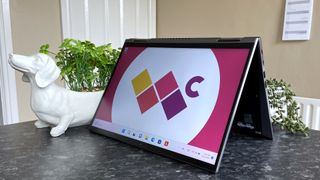
Specifications
Reasons to buy
Reasons to avoid
✅ You're a traveling worker who relies on business-focused apps.
✅ You want a versatile laptop suited to cramped spaces.
✅ You regularly take long trips away from AC power.
❌ You primarily work with creative editing apps.
❌ You crave cutting-edge design aesthetics with a visual flair.
❌ You want the smoothest, brightest panel for regular use outdoors.
🔎 ThinkPad X1 Yoga might not be the prettiest laptop, but it's practically flawless in function. I wouldn't hesitate to take it on a long journey, solving the issue of cramped spaces in public transport with a transformation into tablet mode and a phenomenal battery. ★★★★½
Lenovo has wholly shifted Tech Editor Ben Wilson's opinion on the business-focused category, convincing him away from settling for gaming laptops that double up as work machines. The ThinkPad X1 Yoga scored well with our team each time Lenovo updated it, and the Gen 8 model sold Ben within a single day of use.
It might not be the prettiest laptop, but it's practically flawless in function and makes day-to-day work more accessible. We wouldn't hesitate to take it on a long journey, solving the issue of cramped spaces in public transport with a transformation into tablet mode and a phenomenal battery.
Not every feature is perfect, and Ben thought he would be tempted to spring for a higher-end display. However, after using it for a week, he had no genuine disappointments with the sample X1 Yoga config, blissfully content with the accurate stylus and versatility of such a lightweight machine with all-day battery life.
Anyone looking for the best 2-in-1 laptops focusing on portable working will love it since Lenovo offers generous warranty coverage and software support. We'd choose it a hundred times over the company-designated machines we've been stuck with in the past.
Read the full review: Lenovo ThinkPad X1 Yoga (Gen 8) review: Still the 2-in-1 champion for remote workers
How to choose the best Windows laptop for you:
Buying the best Windows laptop for your needs should involve some careful shopping. You want to be sure that it's perfect for your needs, and you want to be sure that you aren't paying too much. You also want something worth your money that will last for years to come. Setting a price and sticking to it is a good idea when shopping for a laptop. If you can get a device that meets your needs, and you pay what you want to pay, you'll be much happier in the long run.
Many premium devices in this list will run into the multiple thousands of dollars range, but you can also get many of them starting around the $1,000 mark. These laptops are suitable for plenty of tasks, and the more you pay for upgrades, the better performance you'll see.
Mid-range devices usually come in somewhere between $600 and $1,000, and while you can find something built well, the hardware inside may not be able to keep up with intensive tasks, and they likely won't have as many features. This is slowly changing, and we've seen some mighty impressive mid-range devices, notably from the likes of Lenovo, HP, and Dell.
There are a few general uses for which most people buy a laptop: gaming, multitasking, productivity, multimedia editing, or business. Ask yourself what you'll mostly be using the laptop for, and you'll have a much easier time deciding on what type of device you need.
- Heavy usage: Gaming, design, and editing require powerful hardware. You should aim for a high-end CPU and a dedicated GPU. Pair with a high-resolution display if you have the budget.
- Standard usage: Heavy web browsing, occasional gaming, and productivity require average hardware. A high-end CPU will undoubtedly come in handy, though a dedicated GPU is optional. If working with media, extra RAM is never a bad thing.
- Light usage: Light web browsing, email, and occasional video streaming don't require much power. A low- or mid-range CPU will handle this type of work, allowing you to save a lot of money.
There are more considerations to make, including display type, form factor (notebook, convertible, 2-in-1), storage and RAM, battery life, keyboard and touchpad, and ports, which certainly can make it tough to choose one single best Windows laptop. That's why we've laid everything out here to help you make an informed decision.
Modern laptops are available primarily in three different designs.
- Notebook: This is your standard clamshell laptop with a lid that opens to a maximum of about 180 degrees. Notebooks sometimes come with touch displays, but you'll mostly see them with non-touch options, like the HP Pavilion Plus 14.
- Convertible: If you're looking at a laptop with a screen that rotates all the way around to lie flat again, you're looking at a convertible laptop. The design also allows for tent and stand modes, offering you some variety. Convertible laptops use touch displays, like the Lenovo Yoga 9i 14 and ThinkPad X1 Yoga.
- 2-in-1: Laptops with a removable keyboard and touchpad are called 2-in-1. You can use them as a tablet without anything attached, but you can also connect the keyboard for a full laptop experience. 2-in-1 devices use touch displays and often have a compatible active pen, like the Surface Pro 9 and Surface Laptop Studio.
Convertible and 2-in-1 laptops work fine as standard laptops, but they also have the added benefit of working as a tablet. If you hate the idea of a tablet and think you'll be sticking with a standard laptop design, choosing a notebook can often save money.
How we tested these Windows laptops
How we test the best Windows laptops
Testing laptops is no easy challenge, especially when considering how complicated processors, sensors, displays, Wi-Fi/cellular, memory, and varying storage speeds can all impact performance and battery life. Windows Central PC reviewers “adopt” the computer they are planning to review for a long enough duration to reach a subjective decision about its design, aesthetics, functions, and features. We also put each PC through a rigorous battery of tests performed under the same scenarios for objective data to help guide any conclusions.
Windows Central rates every laptop we review based on a star rating scale. One star is the lowest rating, while five stars is the highest. Objective performance data is combined with the subjective experience of the writer and the context of the overall laptop ecosystem to come up with this score.
- 1-1.5 stars: We cannot recommend this laptop, period. Save your money!
- 2-2.5 stars: We don't recommend you buy this laptop, but it does have some redeeming qualities that may be attractive to some.
- 3-3.5 stars: Laptops with this rating are just average, with an even spread of pros and cons. We may not be stoked about this laptop, but it's worth considering and may be just what someone is looking for.
- 4-4.5 stars: Reviews with this score are for laptops that we feel are above average and are definitely worth your time to consider.
- 5 stars: The best of the best. This score is reserved for the most standout laptops in their category for quality and experience. You can be sure that your money will be well-spent with these laptops.
For more information about our review awards and our team of reviewers, be sure to have a look at our broader guide on how we test and review on Windows Central.
Get the Windows Central Newsletter
All the latest news, reviews, and guides for Windows and Xbox diehards.

Cale Hunt brings to Windows Central more than eight years of experience writing about laptops, PCs, accessories, games, and beyond. If it runs Windows or in some way complements the hardware, there’s a good chance he knows about it, has written about it, or is already busy testing it.
